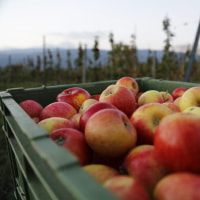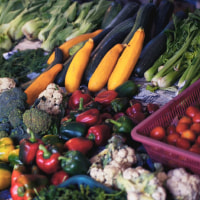
Why Focusing on Nutrition is Important
You care about people, and you work hard to create access to foods that nourish your community. Nutritious foods not only fuel our bodies to heal, grow, play, and work, but also give us opportunities to connect, learn, and support each other.
Unfortunately, our food system doesn’t always make healthy eating easy for everyone. It can be difficult to find and afford the necessities for good nutrition in many communities. Offering a variety of nutrient-dense vegetables, fruits, grains, protein, and dairy foods can support longevity, help prevent disease, and increase quality of life for your shoppers. You can play an important role in your community by focusing on foods that build and sustain health.
For more information that links health, equity, and the importance of nutrition, watch Lesson 1: Why Nutrition Policies here.

Who This Site is For
This site is primarily for hunger relief agencies who are interested in prioritizing shopper choice and highlighting healthy and culturally relevant food options. However, if you are with an agency providing assistance to a hunger relief agency, then this site is also for you. We provide all the tools you need to work with your partners or your own agency.
It’s not necessary for you to have done any prior work, but if you’ve already been doing work that is outlined here there are likely still new ways of looking at your space and policies. Regardless of your starting point, you can use this site for improvement.
Helpful Terminology
As you navigate this site, understanding a few key concepts will be helpful.

Healthy
A healthy dietary pattern is one that focuses on nutrient-dense foods and beverages that promote health, prevent disease, and reflect personal preferences, cultural traditions and budgetary considerations. This includes eating a combination of vegetables, fruits, grains, dairy, lean proteins, and plant-based oils. A healthy dietary pattern also limits foods and beverages higher in added sugars, saturated fat, and sodium. (U.S. Department of Agriculture and U.S. Department of Health and Human Services. Dietary Guidelines for Americans, 2020-2025. 9th Edition. December 2020. Available at DietaryGuidelines.gov.)

Culturally Relevant
Culturally relevant and appropriate foods reflect the preferences and cultural contexts of specific ethnic communities. Availability of culturally relevant food can improve nutrition, facilitate dietary restrictions, and reduce food waste because communities are getting the ingredients necessary for culturally significant meals. Culturally relevant also extends to the design, delivery and evaluation of targeted materials and programs. Whether pertaining to food or program, ethnic/cultural characteristics, experiences, norms, values, behavioral patterns, and beliefs of a particular population as well as relevant historical, environmental, and social forces are considered.

Shopper
Individuals and families who receive food from a food pantry.

Food Pantry
A community organization that distributes food directly to shoppers. In Washington State, the term “food bank” is used interchangeably with food pantry.

Food Distributor
An organization that sources, warehouses and distributes food to food pantries and meal programs. Outside of Washington state, this type of food distributor is often referred to as a “food bank”.

Food Shopper Equity
When we use this term, we are thinking about a philosophy that includes the elimination of policies, practices, attitudes, and cultural messages that reinforce different outcomes based on race, gender, sexual orientation, class, mental health, or ableism. Food Shopper Equity views shoppers as decision-makers and knowledgeable about their needs to develop relevant food programs and policies.